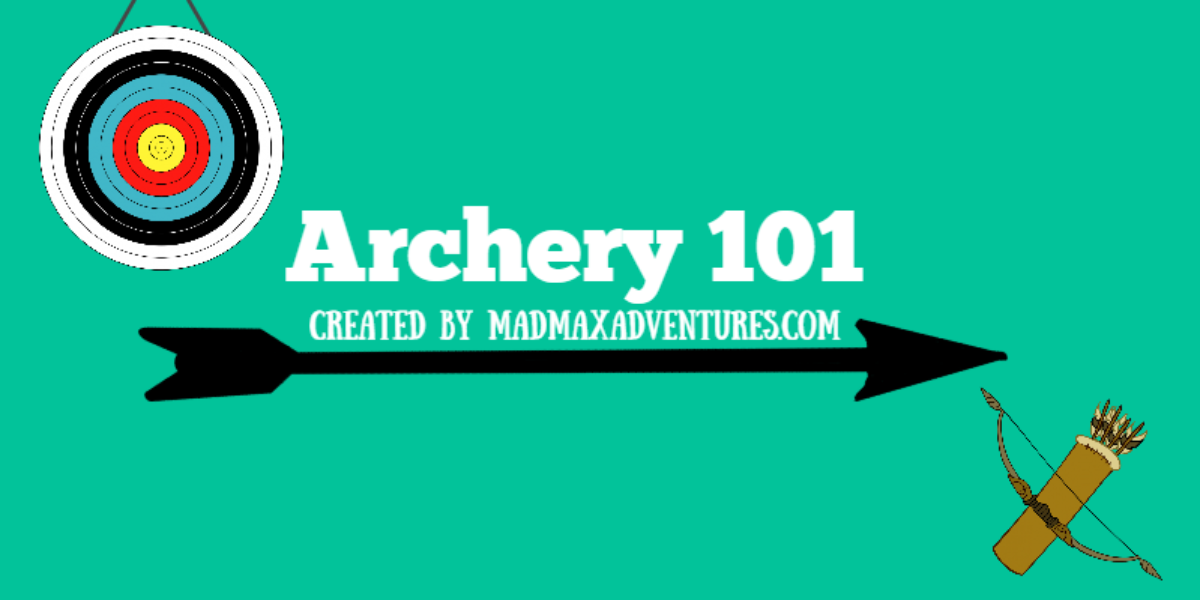Archery 101
- December 15, 2015
- John Strachan

So you’ve decided to take up archery? But what do you know about archery? You’ve never held a bow, let alone shot one, but you feel compelled to try it out. After all, what’s hard about pulling back a string and then letting go, huh? Archery has much more to think about than most people realise, for starters is your bow the right size, are your arrows the right length, is the draw weight correct? All of these things contribute to an excellent or not so excellent archery experience! But what types of bows are there and what are bow size, draw weight and arrow size? We’ve got all of that covered for you right here! Archery is one of the best sports to get involved in, teaching you more than most sports would, while also having fun! So what are you waiting for?
Navigation
Types Of Bows
So Archery is now so advanced that there are many different types of bows, each suited to different jobs, we’re going to focus on the main four; Longbows, Recurve Bows, Compound Bows and Crossbows. All of which are extremely different to each other and better suited to different situations, for example, a recurve bow is possibly the easiest to master and so is usually used for beginners. Many modern bows are constructed of carbon fibre and fibreglass, and with modern advancements have resulted in several types of shooting mechanism.
Longbows
The weapon of choice on battlefields until the rise of firearms in Mid 16th century. Simply designed, they consisted of a long, slightly curved piece of wood (a single piece), not fitted with arrow rests or sights. Modern longbows are usually made up of multiple strips of laminated wood and typically come with a leather covered grip and string. Longbows are possibly the most difficult bow to master due to their size and lack of aiming mechanisms. requiring a lot of practise and patience to master, many archers enjoy the tradition and challenge of mastering a longbow.
Recurve Bows
Named for their shape, Recurve Bows represent the first step into the ever-growing evolution of archery bows. The central parts of the bow, unlike the longbow, curve towards the archer, while the tips of the limb curves ‘recurve’ away from the archer. The use of these curves stores more energy in a shorter length limb, resulting in a better shot arrow with more speed and less strength required behind the shot. Recurve Bows are usually made from wood or machined aluminium. They also come constructed with a centered shelf for the arrow to rest on. Recurve Bows are usually the beginners choice(hence all archery events at Mad Max Adventures use recurve bows), starting with a bare minimum recurve bow, once the shooter becomes more confident and able the bow can be fitted with sights, clickers, and stabilisers. Recurve Bows are the bow of choice used in competitive archery including the Olympics!
Compound Bows
Invented in 1960’s, compound bows are possible the most complex bow you’ll find in existence. With an innovative system of cables, pulleys and eccentric cams to assist the archer when holding a heavy draw weight at full draw. The system allows the archer to hold the draw longer, so they are able to aim for a longer duration. Taking a lot of strength to initially draw the bow, but reducing by as much as 85% once drawn. Due to not being made from natural materials (wood), compound bows are less affected by temperature. This means that shooting in any condition provides a consistency in accuracy, distance and velocity. Definitely not made for beginners these bows are better suited to someone that knows how to handle a bow!
Crossbows
Modern crossbows are designed to imitate the look of a firearm with a short bow attached to the muzzle, held on a rifle looking stock, the bow on a crossbow is drawn by cranking a mechanism. The string is attached to a trigger, much like a firearm and is locked into place until fired. Effective out to around 50 yards. You can buy crossbows in both recurve and compound form, as with both bows, the recurve is usually the choice of beginners due to the simplicity in the design.
Be sure to check the laws on Crossbows and Bows with your local police or check online.
Types of Arrows
Most arrows consist of a shaft with an arrowhead attached to the front end, with fletchings and a nock attached to the other end. The shaft is usually made of one of a number of materials.
Aluminium
Aluminium arrows are possible one of the elite arrows due to their light weight, straightness, and higher speed, as well as their flatter trajectory. These highly durable arrows are a popular high-performance choice, they are also easier to customise in size!
Fiberglass
Fiberglass arrows are easily produced to uniform specification. They are, however, rather brittle and can be easily broken, fractured or snapped.
Composite
Most modern arrows used in tournements and Olympic events are composite. The most popular choice of arrow, providing a swift, clean shot.
Carbon Fiber
Carbon fiber arrows are very light, fly faster and also fly flatter than aluminium arrows. They’re considered the more dangerous arrow of the two because of the precise accuracy of the arrow. Carbon Fiber doesn’t bend or snap as easily but instead will splinter into small sharp shards that could easily damage an archers bow, so be sure to check your arrows and bow regularly to ensure damage isn’t caused.
Draw Length/Weight, Bow Size And Arrow Length
With archery, you have to have the correct sized equipment! There are bow sizes depending on your arm span and arrow lengths as well as working out your draw weight to determine how much pressure you can pull (for example some bows have a 60lbs drawback whereas others have a 160 lbs drawback). Having the right sized equipment means you have the same chance as everyone else.
Below is a rough guide to help work out your average draw length, ofcourse this isn’t ALWAYS accuraste but can give a good range.
Draw Length/Weight
To calculate your draw length, stand with your back against a wall, arms extended to the side. Then, measure the “wingspan” from fingertip to fingertip. Take that measurement and divide it by 2 1/2. This will give you a rough draw length. For example, a 45-inch wingspan divided by 2 1/2 equals an 18-inch draw length. Remember, correct draw length is an important component in proper shooting form. Without proper form, accuracy will suffer and enthusiasm to participate will be stifled.
When it comes to correct draw weight you want to focus on comfort. Pulling a bow is unique and uses a unique set of muscles. It takes some time to condition these muscles to where they have the endurance to be able to repeat a draw cycle over and over. If you struggle to reach full draw, or are using erratic drawing motions (If you’re unable to draw the bow back smoothly) to do so, then the poundage is too high. A simple test to determine if draw weight is too great is to have the shooter sit in a chair with legs open and the bow straight in front. While in this position, attempt to come to full draw. If you can’t draw the bow back without raising it 4 to 6 inches above your line of sight, then you’re likely shooting too much weight. Lowering the poundage will allow you to draw the bow back in a smoother, relaxed manner.
Bow Size
When you’re buying a bow for yourself or for someone else, you need to know their draw length so you can buy a bow of the correct size! Not doing so will cause you to be ‘Over Bowed’ and your archery experience won’t be anything near as good as it could be as you’ll be physically pained and annoyed! To calculate your bow size, you need your calculated draw length or actual draw length.
Calculated Draw Length | Bow Size |
|---|---|
14″ to 16″ | 48″ Bow |
17″ to 20″ | 54″ Bow |
20″ to 22″ | 58″ Bow |
22″ to 24″ | 62″ Bow |
24″ to 26″ | 64″ to 66″ Bow |
26″ to 28″ | 66″ to 69″ Bow |
28″ to 30″ | 68″ to 70″ Bow |
31″ + | 70″ to 72″ Bow |
Arrow Length
Arrow length and size are two different things, arrows also come equipped with various tips/points, there are a variety of arrows available to buy and you can even have a go at making your own!
- Arrow Length – refers to the length of the arrow shaft.
- Arrow size – refers to the spine (stiffness) of the arrow. The shaft size is always referring to the diameter of the shaft, the wall thickness of the shaft and the distance that the arrow shaft will flex before it bends or breaks.
To help determine what approximate arrow length you need, stretch your arms out in front of you with palms together and fingers extended. Then measure from the center of your chest to the tips of your fingers. Add one inch to this measurement to get an approximate arrow length. The following conversions can be used to help you choose the right bow length:
Arrow Length | 14 – 18″ | 18″ – 20″ | 20″ – 22″ | 22″ – 24″ | 24″ – 26″ | 26″ – 28″ | 28″ – 30″ | 30″ + |
|---|---|---|---|---|---|---|---|---|
Bow Length | 48″ | 54″ | 58″ | 62″ | 64″ | 66″ | 68″ | 70″ |
Another useful resource(s) are:
Archery Safety Tips
All sports have rules and safety tips, but when that sport involved projectiles and weapons, you have to set a few extra! Here are a few rules you should always follow:
– Before using, inspect all equipment to ensure it’s safe. Be sure to check the bow and arrows for defects or disrepair, anything including wear, cracks, fraying, twisting etc. Be sure all screw are tightened and bow accessories are properly attatched.
– Never point a drawn bow in the direction of another person.
- Don’t wear loose fitting clothing, as this can possibly get caught in your bow.
– Carry arrows facing down or in a quiver.
– If you’re a young archer or are a beginner, always be supervised.
– Don’t draw a bow further than the length of the arrow you have.
– If firing upon a target be sure to make sure there are no obstructions such as other people, pets or other unintended targets.
Here are some useful resources regarding archery safety:
Archery for beginners – Safety Tips and Rules
- Filed Under: Archery


